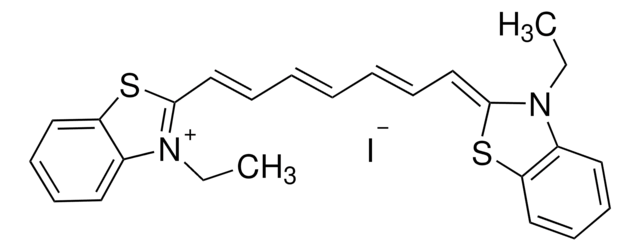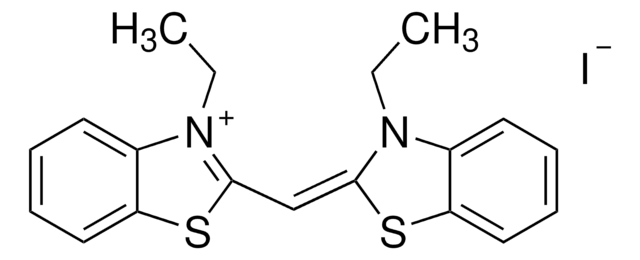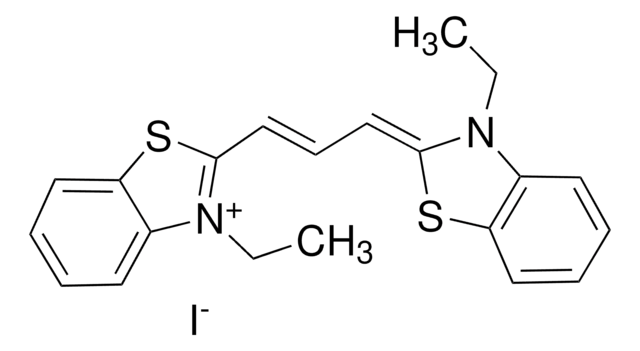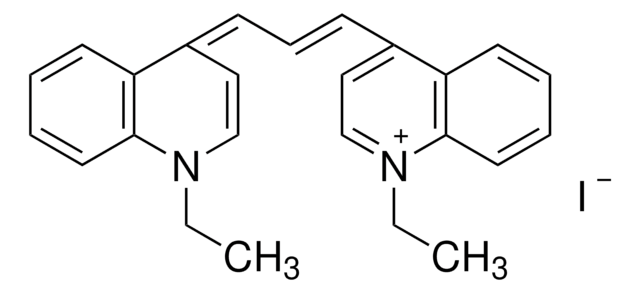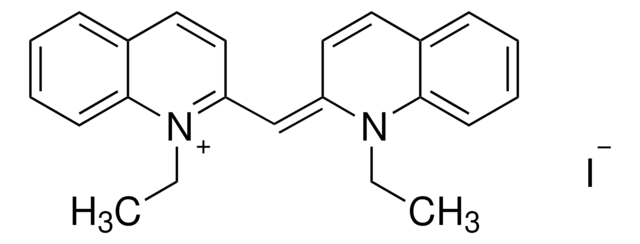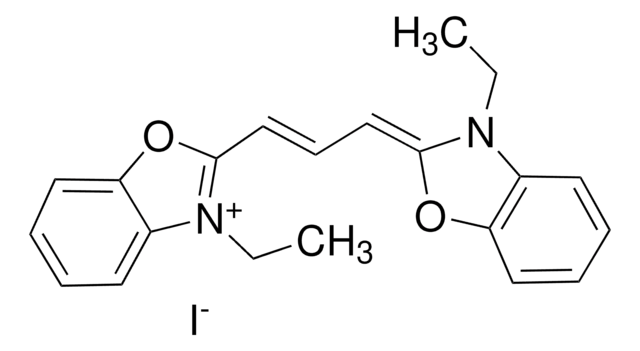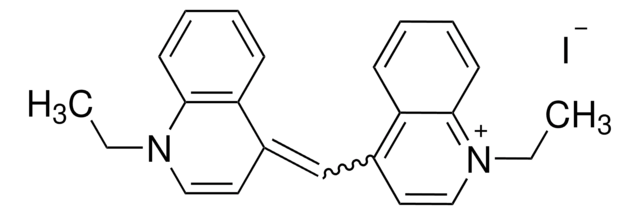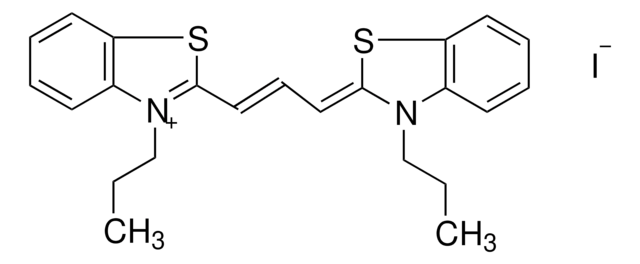173754
3,3′-Diethylthiadicarbocyanine iodide
Dye content 98 %
Sinonimo/i:
3-Ethyl-2-[5-(3-ethyl-2(3H)-benzothiazolylidene)-1,3-pentadienyl]benzothiazolium iodide, DTDCI, DiSC2(5)
About This Item
Prodotti consigliati
Composizione
Dye content, 98%
Livello qualitativo
Punto di fusione
249 °C (dec.) (lit.)
λmax
655 nm
Stringa SMILE
[I-].CCN1/C(Sc2ccccc12)=C\C=C\C=C\c3sc4ccccc4[n+]3CC
InChI
1S/C23H23N2S2.HI/c1-3-24-18-12-8-10-14-20(18)26-22(24)16-6-5-7-17-23-25(4-2)19-13-9-11-15-21(19)27-23;/h5-17H,3-4H2,1-2H3;1H/q+1;/p-1
MNQDKWZEUULFPX-UHFFFAOYSA-M
Cerchi prodotti simili? Visita Guida al confronto tra prodotti
Categorie correlate
Applicazioni
- Fluorescent contrast agent in three-dimensional fluorescence lifetime tomography.
- Dye for rapid genetic screening.
Caratteristiche e vantaggi
Avvertenze
Danger
Indicazioni di pericolo
Consigli di prudenza
Classi di pericolo
Acute Tox. 2 Oral - Eye Irrit. 2 - Skin Irrit. 2 - STOT SE 3
Organi bersaglio
Respiratory system
Codice della classe di stoccaggio
6.1A - Combustible acute toxic Cat. 1 and 2 / very toxic hazardous materials
Classe di pericolosità dell'acqua (WGK)
WGK 3
Punto d’infiammabilità (°F)
Not applicable
Punto d’infiammabilità (°C)
Not applicable
Dispositivi di protezione individuale
Eyeshields, Faceshields, Gloves, type P3 (EN 143) respirator cartridges
Scegli una delle versioni più recenti:
Possiedi già questo prodotto?
I documenti relativi ai prodotti acquistati recentemente sono disponibili nell’Archivio dei documenti.
I clienti hanno visto anche
Articoli
Graphene has emerged as the new wonder material. Being only one atom thick and composed of carbon atoms arranged in a hexagonal honeycomb lattice structure, the interest in this material has exploded exponentially since 2004 when it was first isolated and identified using a very simple method.
Nitric oxide (NO) as a signal transporter in neurons, endothelial cells and in the immune system.
Il team dei nostri ricercatori vanta grande esperienza in tutte le aree della ricerca quali Life Science, scienza dei materiali, sintesi chimica, cromatografia, discipline analitiche, ecc..
Contatta l'Assistenza Tecnica.